Relieve Foot Pain Fast By Using These Proven Plantar Fasciitis Exercises & Stretches
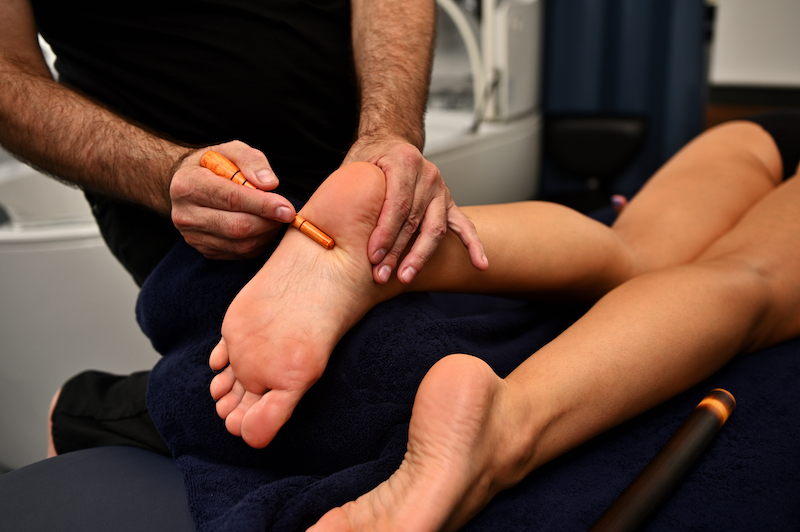
What Is Plantar Fasciitis?
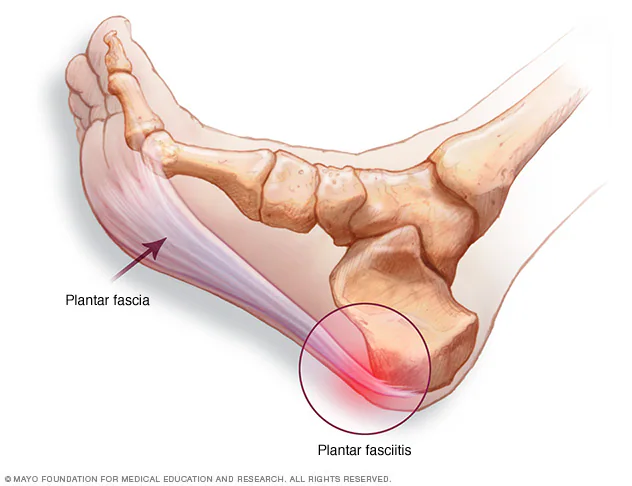
Plantar fasciitis is an often painful but manageable condition of the feet, affecting the heel, arch, and sole of the foot, where the fibrous sheath spanning the underside of the foot gets inflamed.
This inflammation will often manifest as heel pain.
While plantar fasciitis can be felt in one foot or even both, it is one of the most common reasons for patients to seek care at medical outpatient clinics when they have “heel pain.”
How Common Is Plantar Fasciitis and Who Gets It?

Every year in the United States, 2 million people are afflicted with plantar fasciitis and seek treatment for their symptoms.
It is likely that a greater proportion of individuals have symptoms, but are not seeking medical intervention.
It is common to participants of high-impact activities such as jogging, basketball, or dancing.
Even still, those who lead sedentary lifestyles can also be affected.
What Does Plantar Fasciitis Feel Like?
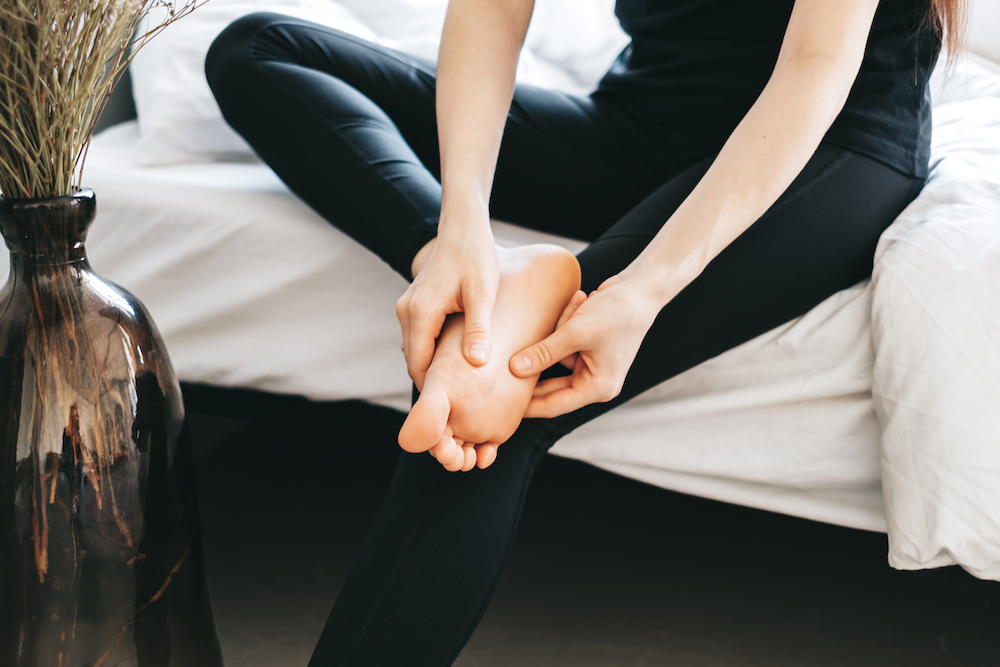
Typically, plantar fasciitis pain is present in the morning within the first few steps of getting out of bed and described to be a “sharp or stabbing” pain which may make it unbearable to walk.
Often, this pain subsides once you start moving.
The pain may also return during the day after having stood for long periods of time or after sitting for a while, and can even be worse after exercise.
Often this sharp pain is felt in the heel or arch of the foot depending on your biomechanics.
How Can I Try To Treat My Plantar Fasciitis?

Change or upgrade your footwear
Swapping out your worn-out shoes or shoes with lack of support could just be the solution to alleviating your plantar fasciitis pain.
In fact, if you have been wearing the same pair of shoes regularly for a few years, and/or if you have been using the same ones for exercise, it’s time to replace them.
This holds true especially for runners, as a pair of shoes can get worn out in a matter of a few months depending on how many miles you are logging or the intensity of activity you are engaged in.
Workplace and casual shoes may need to also be exchanged for footwear with better support and/or with a minimal heel, especially if you are suffering from plantar fasciitis.
In fact, wearing high-heeled shoes will change the foot and ankle alignment which can then lead to low back pain.
Therefore, doctors recommend choosing footwear that supports your arch and with a whole-body wellness approach versus purely on style.
The best type of footwear is designed with a low to minimal heel height with lots of room in the toe box to move your toes, in addition to moderate to significant arch support depending on your foot biomechanics.
How do I know when to change my shoes?
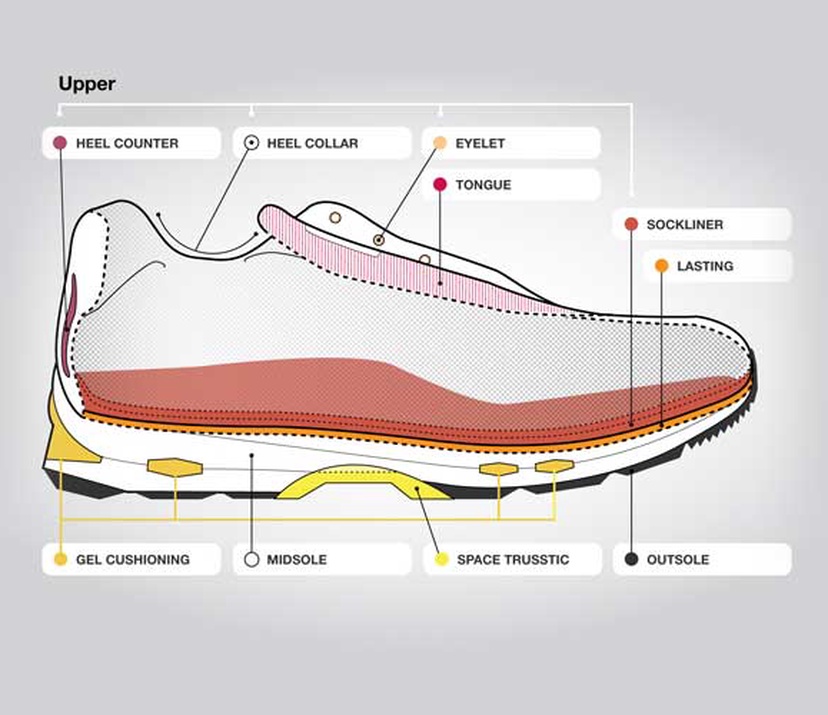
When heel pain strikes, take a look at the shoes you wear regularly.
Aside from assessing the height of the heel, the following signs of well-worn shoes indicates that it is time to swap them out for a new pair:
- Outsoles are worn out
- You are developing blisters
- Shoe interior has worn down
- Signs of new feet, leg(s), or back pain
- Insoles have molded to the shape of your foot
Keep in mind, athletic shoes used by runners should be replaced every 600-800 kilometres, or approximately every 6 months.
However, replacing shoes for non-runners also depends on the frequency of wear, whether they are worn in, and symptoms the wearer is noticing.
Strengthen your feet
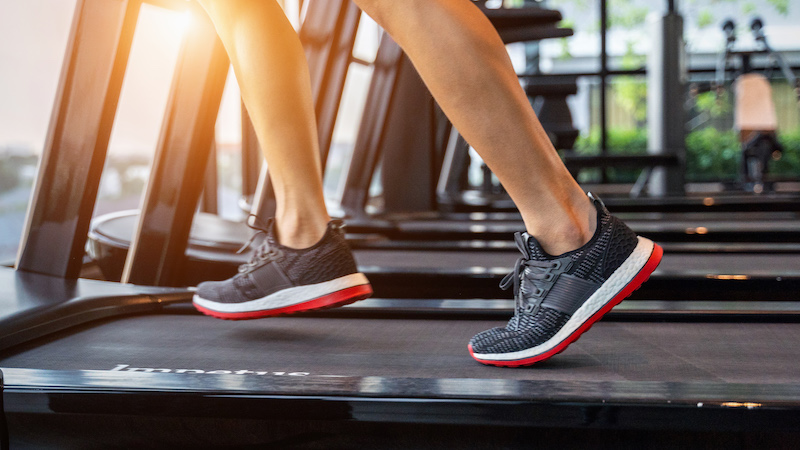
Due to the nature of the injury and the fibrous bands of the plantar fascia being stretched to its limits, it tends to weaken if left untreated.
Therefore, building lower leg and foot strength is critical for improving your injury and restoring foot health.
Though stretching the plantar fascia and achilles tendon, which stabilize the heel and foot, will help strengthen the muscles of the lower leg, it is still important to seek professional help as the exercises for recovery are nuanced.
Deep Tissue Massage
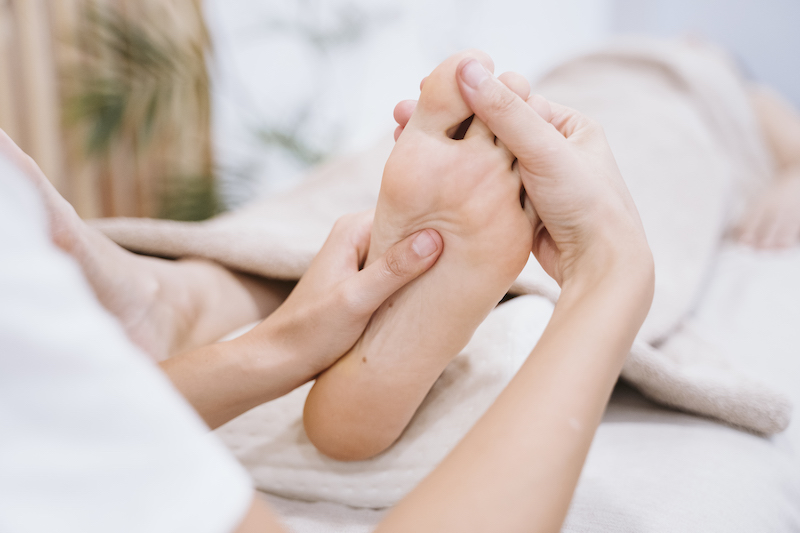
A deep tissue massage is helpful for relieving strain in the sole of your foot to loosen the plantar fascia and the associated tendons and ligaments that make up the underside of the feet.
Over time these structures have become tight and out of place resulting in inflammation.
You can even try to massage the plantar fascia yourself first with a rolling pin, baseball
How Can a Registered Massage Therapist Help With Your Plantar Fasciitis?

As with any injury, it is best to seek professional help and guidance early.
The following favourable outcomes for plantar fasciitis from massage therapy has been studied:
- Reduced heel pain by massaging associated structures (ie. calves)
- Assignment of rehabilitative exercises to decrease pain-related disability
- Overall pain reduction and tenderness
Why Choose Registered Massage Therapy for Plantar Fasciitis?

Registered massage therapy is amongst a handful of non-pharmacological and non-invasive treatment options that has been studied to show effectiveness in pain management and improvement for various injuries.
Patients are assessed holistically and a patient centered approach is prioritized with each individual.
Treatment plans are based on thoughtful consideration of patient tolerance to treatment load and comfort.
Considering this background, plantar fasciitis is one of the most common injuries along with back pain that individuals seek help from a registered massage therapist for.
What Can I Expect on My First Appointment With a Registered Massage Therapist?

On your first appointment, the registered massage therapist will look into your orthopedic medical history, perform a biomechanical physical exam and potentially even conduct a gait analysis to figure out the cause of your heel pain.
Additionally, your RMT will give you exercises and stretches to accompany your massage treatments, and show you proper techniques to massage for plantar fasciitis on your own for days in between treatments.
Furthermore, RMTs can also provide you with footwear suggestions for footwear to help you make appropriate choices for the types of activities you partake in, and may even be able to guide you about custom orthotics.
What Type of Massage Will The Registered Massage Therapist Use To Treat My Plantar Fasciitis?
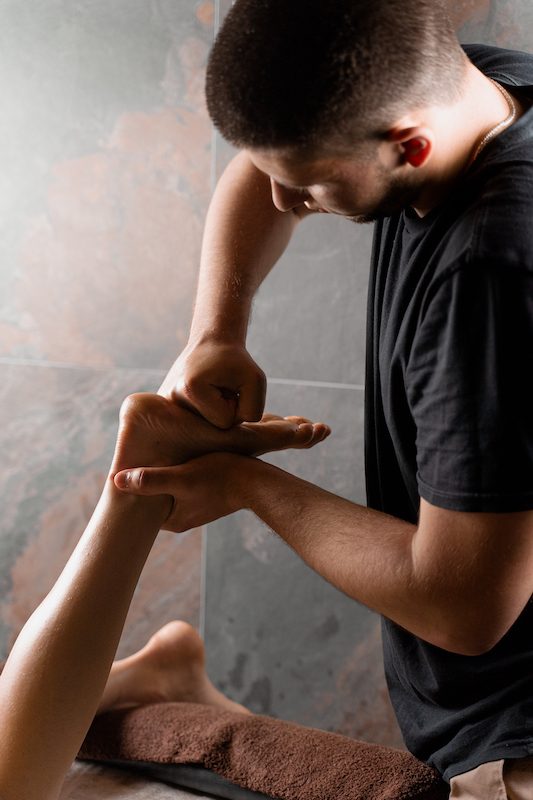
A registered massage therapist will always work with your comfort level and severity of heel pain to treat your plantar fasciitis, and use various techniques from kneading, myofascial release, trigger point therapy, positional release, to pin and stretch.
However, only one or more of these techniques are used at a time until the patient finds relief from their heel pain, and will be adjusted as your condition improves.
What Can I Try at Home Before Seeing a Professional?
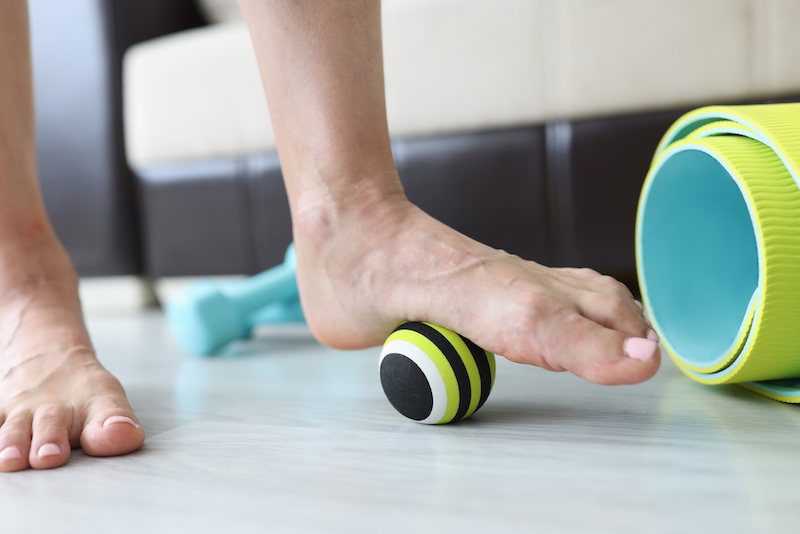
It is important to treat your plantar fasciitis early.
On your own, you can try icing, massaging, and stretching to get relief from plantar fasciitis pain.
The best time to give yourself a foot massage is when your feet are already warmed-up.
Prep your feet by having a warm bath, shower, or simply soaking your feet for about 10 minutes.
Next, spread some oil or moisturizer on your hands and follow a tic-tac-toe pattern to massage the underside of your feet.
Use this pattern with varying pressures from medium to firm, and work lengthwise first ensuring to massage from your heels to your toes to treat the entire length of the arch.
Then apply the same pattern working sideways across the width of the arch. Try massaging each foot in both directions (vertically and horizontally) for about 2 minutes.
Follow this up with icing each foot for 10-15 minutes.
Massaging the injured area will increase circulation and reduce tension and tightness in the plantar fascia.
Why Did I Get Plantar Fasciitis?

There are a multitude of reasons for getting plantar fasciitis with the most common reasons being sudden increases in high impact activities, weight gain, or pregnancy.
Running without gradual increases in miles can add pressure to the fascia, damaging or causing microtears resulting in inflammation and pain.
What Are Some Of The Risk Factors of Plantar Fasciitis On Clinical Examination?
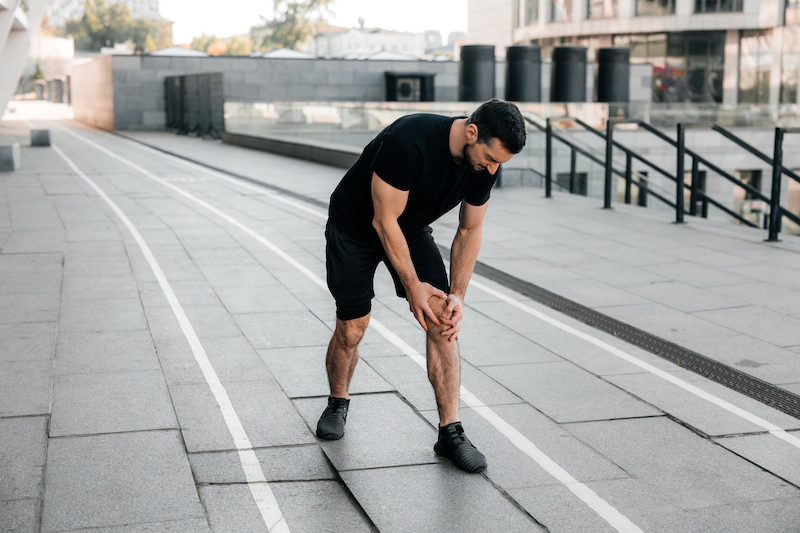
Upon examination, your Registered Massage Therapist may find the following factors contributing to your plantar fasciitis:
- Tight Calf muscles
- Muscle weakness in the feet
- Incorrect walking/running patterns
- Leg length difference
- Tight/weak muscles around the hips, knee, and low back
- Unsuitable footwear choice(s)
- Excess weight
- Sudden increase in exercise volume and intensity
- Unfavorable exercise surfaces/environment
What Are My Treatment Options for Plantar Fasciitis Aside from Registered Massage Therapy?
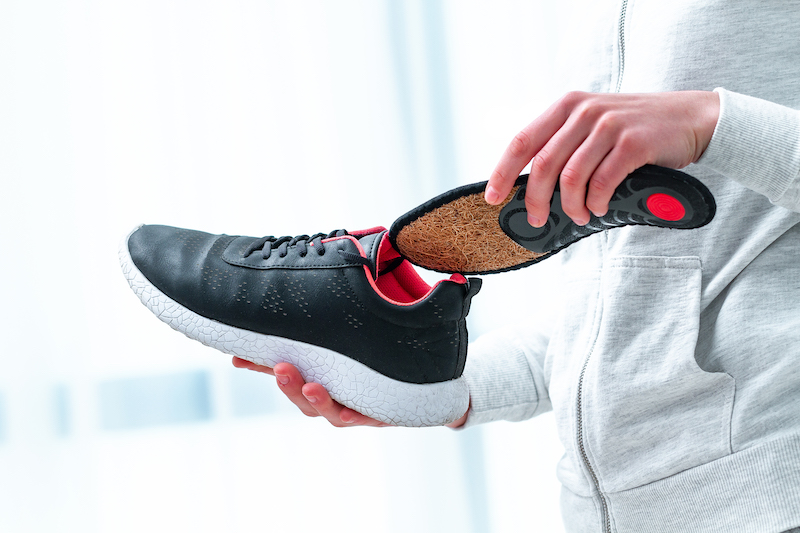
By the advice of a professional, you may be recommended specialized shoes, custom orthotics, or a night splint for sleeping.
For instant relief, try self massaging your feet using the technique previously described above
Can Custom Orthotics Help Treat Plantar Fasciits?
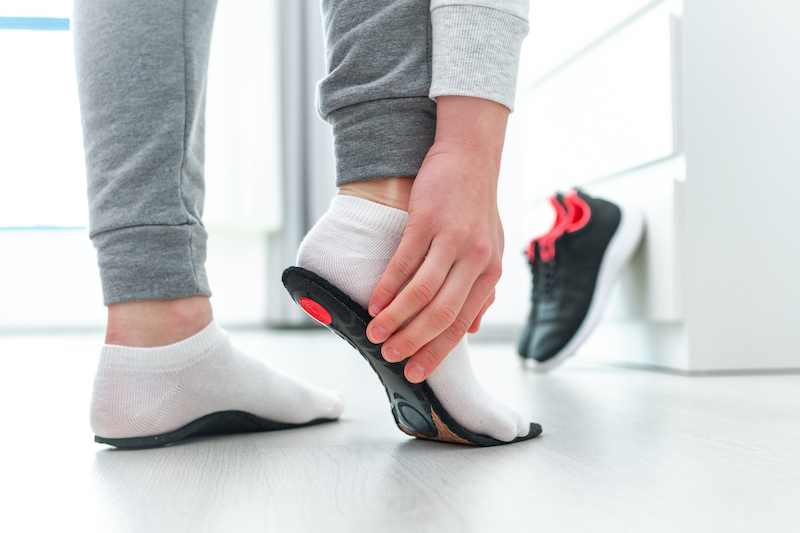
Custom orthotics are often prescribed to help treat plantar fasciitis symptoms.
They are effective because they are customized to fit inside most shoe types, thus helping to restore the normal foot arch by restoring the length of the plantar fascia; and aiding with inflammation, soreness, and pain.
Custom orthotics are also covered under most extended health insurance plans, but it’s always a good idea to double check before making an appointment to see the chiropractor for an orthotics appointment.
Click here to learn more about Custom Orthotics.
When Should I Consult A Doctor About My Heel Pain?

With self-management through icing, stretching, and resting, most people will recover from plantar fasciitis in a few months.
However, if you are not feeling any improvements in your heel pain after about 2 weeks on your own, and/or your pain worsens, it is important to seek treatment before it escalates to a more severe condition.
Will Plantar Fasciitis Resolve On Its Own?

Left untreated without any sort of self-management or professional care, the condition will continue to worsen.
Extreme cases of heel pain due to plantar fasciitis can lead to degeneration at the heel where the fascia attaches to.
Even still, heel pain itself can be a sign of a stress fracture or a compressed nerve rather than inflammation of the plantar fascia.
A mild pain initially can easily become exacerbated and should not be ignored.
Seek professional advice and care if your heel pain persists for more than a couple of days, as soon as possible.
Why Do I Need To Stretch And Strengthen My Lower Body?

Tight and weak feet or calf muscles tend to initiate or irritate plantar fasciitis.
Therefore it is important to stretch and strengthen these muscles to ease the pain and prevent it from getting worse.
How Do My Hips And Low Back Contribute To Plantar Fasciitis?

While a treatment for plantar fasciitis by a Registered Massage Therapist will specifically address the foot and calf muscles, an experienced RMT will also know to address any tightness and/or weakness in the hip and low back muscles as well.
This is of important consideration as the plantar fascia can be overloaded due to the body’s propensity to adjust movement patterns for one that is more comfortable, and ultimately can start or exacerbate plantar fasciitis.
5 Amazing Self-Massage Techniques To Try At Home
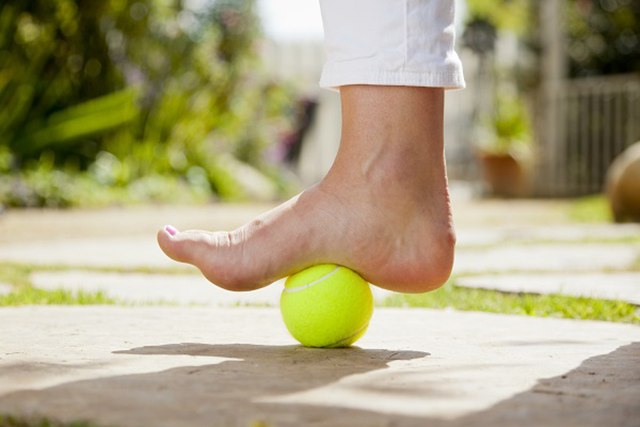
1. Plantar Fascia Massage – Use a Ball or a Frozen Water Bottle
Sit or stand to start, then place the affected foot on a tennis ball to it back and forth under your arch and heel.
The tennis ball can also be replaced with a frozen water ball which will additionally relieve your foot of any inflammation.
Do this exercise for 5 minutes, 3 times a day.
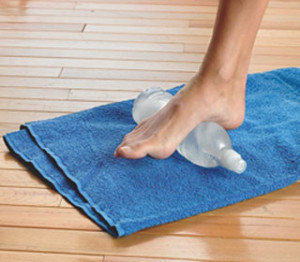
*Using a frozen water bottle helps alleviate inflammation and can be done in the morning before your first steps, which is often painful, and/ or at night.
The rolling motion will help stretch out the fascia and the cold will calm down the “stabbing” pain often experienced with plantar fasciitis.
2. Thumb Pulls
Sit on a chair and cross one leg over the other so the ankle rests on the thigh.
Start by placing both thumbs on the center of the foot and pull one thumb towards the right and the other thumb to the left, at the same time.
Repeat this same movement back and forth focusing on this area of the foot (middle) for 1-2 minutes.
Then either move up or down and repeat this for 1-2 minutes. Make sure to cover the entire surface of the foot using pulling technique in opposite directions.
If you require more pressure use your body weight by leaning into the thumbs.
3. Thumb Pushes
(Only watch the video until 3:45)
Sit on a chair and cross one leg over the other so the ankle rests on the thigh.
Take your thumbs and place them on your heel and push down working your way towards the big toe and back down towards your heel.
Think of pushing in straight lines and use your toes to help you keep track of what areas you have worked on.
You essentially want to work the entire sole of the foot in a vertical direction.
4. Calf Rolling
Start by sitting either on the floor or on a chair with your legs extended in front of you.
If you choose to sit on a chair, make sure you have another chair to rest your foot on.
Using a rolling pin, roll it up and down down the length of your calf (behind the knee to the ankle) either in long strokes or small strokes.
Apply enough pressure as tolerable.
When you hit small painful “bumps” concentrate on that area to loosen the muscle.
This is most effective when done for 5 minutes on each leg.
5. Calf Pulling
Sit on a chair and cross one leg over the other so the ankle rests on the thigh.
Grasp your calf with both hands so your thumbs are on your calf (back) with the thumbs pointing down, and your fingers on your shin (front) just like the picture.
Next, gently pull on the calf muscle as if you are pulling it forwards to the front of the leg.
Do this for 1-2 minutes as you work up and down the lower leg.
6 Exercises and Stretches To Relieve Most Cases Of Plantar Fasciitis
Before starting any of these exercises or stretches you should always warm up your feet and lower leg with a light massage, after a shower or after being on your feet all day.
Essentially you just want to get some blood flowing in the area(s) to promote healing and relief to the injured area.
#1. Soleus Stretch

Place the injured foot behind the healthy foot, allowing for a small space between the heel and toe, and then slowly bend both knees to feel a gentle stretch behind the calf muscle of the injured foot.
Hold this position for 20-30 seconds.
Repeat 3 times on both sides.
#2 Achilles/Gastrocnemius Stretch
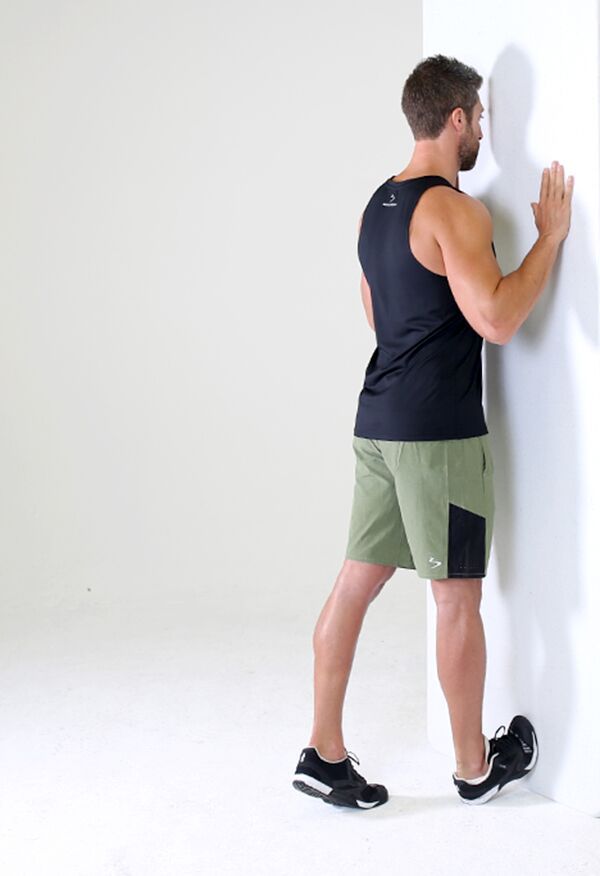
Place the forefoot of the injured foot against the wall, keeping the knee straight, and let the heel rest on the floor.
Place your hands up against the wall for balance and then gently bring your upper body closer to the wall until you feel a stretch in the calf muscle.
This stretch will be felt more superficially than the soleus stretch.
Hold this position for 20-30 seconds. Repeat 3 times on both sides.
#3 Plantar Fascia Stretch
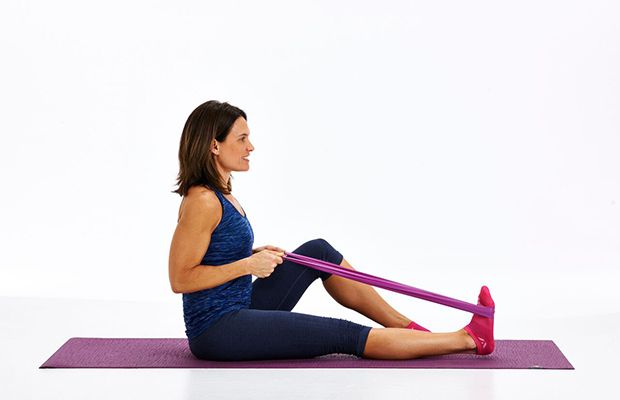
Start by sitting with your legs stretched out straight in front of you and place a towel or band under the ball of your foot to pull the foot towards your shin. A gentle stretch will be felt from your heel and span the underside of the foot.
Hold this position for 20-30 seconds.
Repeat 3 times on both sides.
#4 Heel Raises
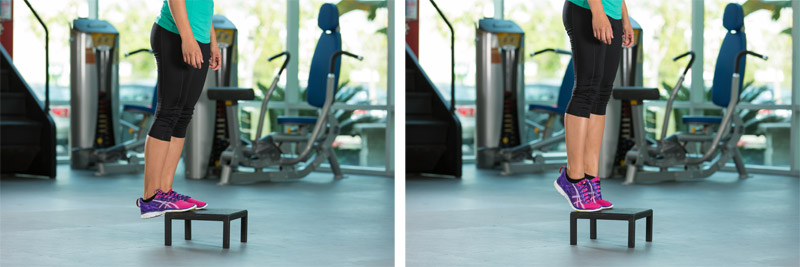
This exercise can be complex as it requires the patient to balance on the ball of their feet with the heels off the edge of the step. Holding onto the wall or a handle for support is recommended.
Engage the abdominals and slowly lower yourself until your heels are slightly below the step.
Then push through the balls of your feet and toes to lift yourself up until your heels are above the step. Finally, return to the starting position so the heels are level with the step again. Do not rush your movements and ensure you are moving in a vertical direction without swaying forwards or backwards.
Practice this exercise for 10 repetitions, 3 times a day.
#5 Toe Extensions
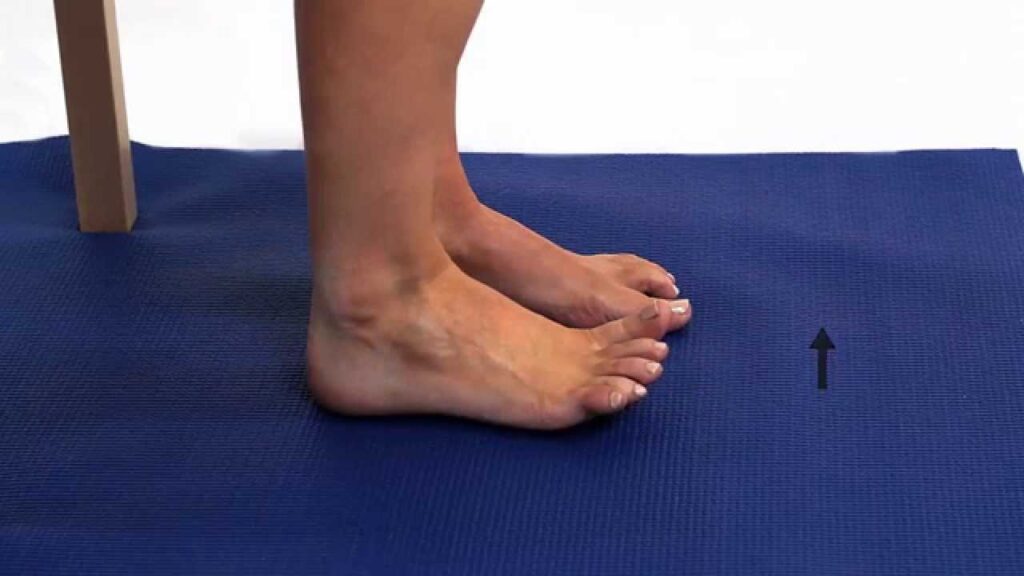
Start standing with the feet shoulder width apart, engage the core, and lift your toes off the floor.
Perform this exercise for 10 repetitions, 3 times a day.
#6 Towel Toe Curls
Starting in a seated position with both feet flat on the floor, place a towel under your affected foot and scrunch your toes to grab the towel.
Then relax the toes to release the towel. While performing this exercise, focus on the muscles under your feet as the areas for intended strengthening are the arch and the muscles.
Perform this exercise for 10 repetitions, 3 times a day
We’d love to hear about your experience, and your shared feedback is greatly appreciated.


